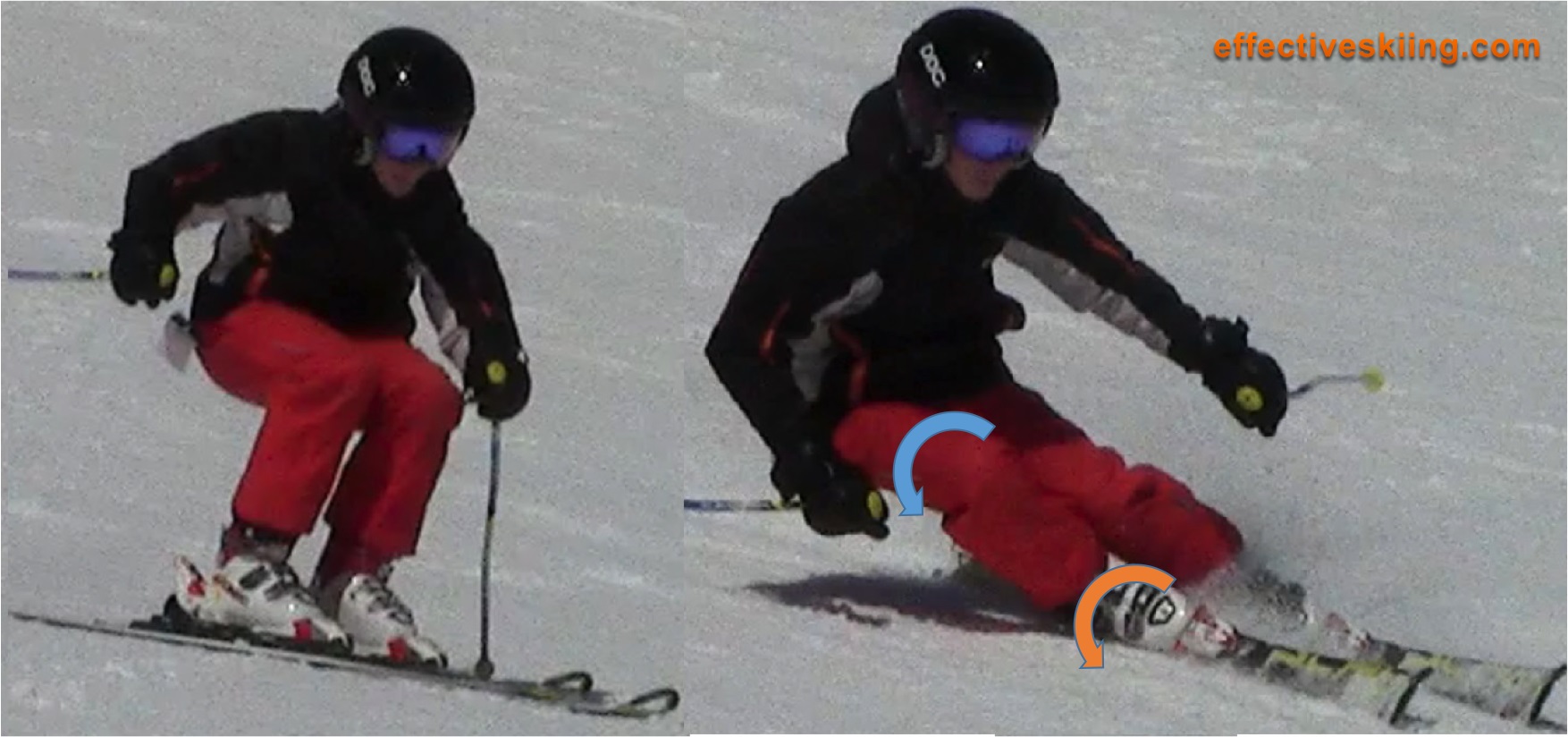....If he flexes his left leg, and changes NOTHING else, that dynamic balance will be destroyed. The upward force of the snow will be transferred from the left ski to the right ski, meaning that the skier's degree of inclination as measured using the line from the center of mass through the base of support will no longer be sufficient to counterbalance the combination of the force of gravity and centripetal force. The skier will start to topple over to the outside.
....Likewise, if the skier instead extends the right leg and does NOTHING else, his balance will be affected in the same way, and he will start toppling over. The results will be similar.....
@Loki1, those are good pics that do help clarify what you are saying. But what
@Chris V. says, that toppling occurs as a direct result of flexing or extending one of those legs without consciously doing anything else, has been my repeated experience as a skier.
That said, "doing NOTHING else" probably doesn't happen in real turns. And a knee that moves laterally relative to the pelvis above it by definition involves femur rotation in that hip socket. Perhaps unconscious lateral movement of the knee does happen even if a skier intentionally tries to eliminate such movement. Perhaps.
If the skier is flexing the new inside leg to start a turn
and intentionally rotating that femur, then that knee movement will make the skier go bowlegged. If the skier is extending the new outside leg
and rotating that femur, then that movement will make the skier knock-kneed at initiation. (Or of course the skier could rotate both femurs to keep the shins parallel.) Thinking about it now, I can see that any of these movements will make the edge change of the skis happen earlier than it happens when simply flexing or extending the leg, because any lateral movement of the knee tilts the shin and the ski more than the toppling alone.
But lateral tilting of the lower leg to tip the skis does not have to have the lower leg tilt more than the upper leg. The whole leg can tilt as a unit without the femur rotation and lateral knee movement. Chris V. has explained why that follows from flexion or extension of the appropriate leg. Balance is disrupted and the CoM topples, bringing with it the legs and skis.
So let's assume your racer does manage to eliminate all femur rotation and only extends that new outside leg. Or only flexes that new inside leg. In each case his body will topple. He'll end up first on flat edges then on new edges. Again, this has been my experience in skiing.
If we had snow, it would be easy to go out and make some (parallel) turns, with the conscious intention of starting turns by extending the new outside leg without allowing femur rotation (or anything else) to happen, and then with the intention of flexing the new inside leg without allowing femur rotation to happen. Actually, that would be a great way to complete the first day on skis, trying to isolate both of those initiation strategies, performing each of them in isolation, without femur rotation, and seeing what happens.
I remember clearly my first experiments with each of these initiation movements. The results I felt were clear and unmistakeable. Shock and awe, actually, with a skier flavor.



